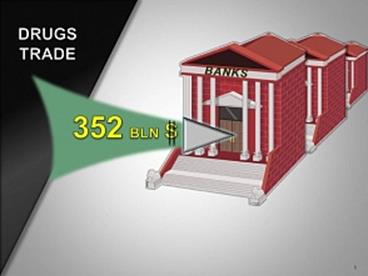
Taking into account the existing regulatory mechanisms, the bankruptcy of such “giant” will mean the collapse of the global financial system.
Reading the news about the collapse of Deutsche Bank’s hard not to go crazy. One gets the impression that any adequate analytical reports are simply buried under a pile of scandalous publications and even professional financiers in all seriousness talk about “huge derivative positions” and “second Lehman Brothers”. The tantrum picked up by politicians and ordinary people, and now there is a world of events, the probability of occurrence of which is as guaranteed as the bankruptcy of the largest Bank in Germany.
But if you omit the emotions and take numbers, facts or even just for terms, the picture may be very different. Let’s just look at the most famous fears around which build a picture of the terrible future of the financial giant.
<ol>
</ol>
By early October the Deutsche Bank was worth just over $10 and its market capitalization has fallen to a historic $16.9 billion. Yes, the banking business now do not pay dividends, and investors who get rid of the shares of the German Bank, doing quite reasonable. But can it have some influence on the stability of the Bank, which is not measured by capitalization and capital adequacy? If there really is a “hole” in the balance sheet that everyone is talking about?
One of the most important indicators for the Bank is the capital adequacy ratio baseline, which represents the ratio of basic tier I capital (CET1) to the value of assets, adjusted for risk (CET1/RWA). The requirements are established in accordance with Basel III and regulators.
These requirements for systemically important banks (which include Deutsche) ratio should increase with 5,625% 2016, 9% in 2019 based on 2 “buffers” (capital preservation buffer and global systematically important institution buffer).
According to a Deutsche Bank report, by 30 June 2016 CET1 it was €43,52 billion, while the value of assets, adjusted for risk of €402 billion. Thus, the level of capital of the Bank is 10.82 percent. With the addition of buffer capital is already 12,2% (€48.98 bn). And if you remember to sell the stake in Hua Xia Bank and Abbey Life Assurance, then the ratio can add an additional 0.5%.
2.It is easy to bankrupt Deutsche Bank?
To reach the bankruptcy, will have to try very hard. First, DB has the status of a global systemically significant Bank. In an emergency he could count on the assistance of several financial regulators. But first the Bank has stabilization mechanisms triggered, which protects the Bank from default.
One of such mechanisms — conditional convertible bonds (so-called Coco-bonds), which may be debited from the Bank’s balance sheet or converted into equity when the ratio of CET1/RWA certain event (usually set at the level of 5,125%). To make this happen, the cancellation of CET1 capital Deutsche Bank needs to be more than €22 billion
We recall that the maximum threatens the penalty to the Bank — $14 billion, and for the results of the latest stress test of the European banking system in the pessimistic scenario (in which the by 2018 the unemployment rate in Germany increased almost two times, and the market value of all German companies will be affected during this same time, 53%) level of CET1 capital, Deutsche Bank, for two years of the alleged crisis will be reduced only to 7.8%.
Moreover, the new German legislation on financial insolvency, from January 2017 the overall rate covering losses (TLAC), in addition to tier I capital and subordinated debt would include senior unsecured debt of the company. In other words, Deutsche Bank will not be bankrupt as long as it can meet its obligations to depositors and counterparties. On June 30, 2016 TLAC Deutsche Bank amounted to €118 billion.
Finally, in the case that the stabilization capabilities of the Bank have been exhausted, the European stability mechanism (ESM), which is €60 billion of reserves allocated for the recapitalization of the banking system as a last resort may initiate the procedure of recapitalization of the Bank.
3.If there are “trillions” of a position in derivatives?
The media constantly refer to the fact that as of the end of June 2016, the volume of derivative positions Deutsche Bank amounted to €46 trillion. i.e. an amount exceeding the GDP of Germany, 13 times.
But above all, €46 trillion. is the total face value of existing derivative contracts (notional amount). It is used as a rated value to determine the real value of derivative positions (i.e. the actual values of credit risk), which is several orders of magnitude less. And according to statements compiled according to IFRS, at the end of June 2016 the cost of the items amounted to €615 billion.
However, the IFRS does not involve the netting of opposite positions and does not take into account the collateral obtained from counterparties. Therefore, the net risk (net exposure) taking into account the netting of positions and collateral for all derivative contracts the Bank is only some €41 billion thus the basic share falls on interest rate derivatives, which are used by all banks to hedge interest rate risk.
For comparison, the net exposure for derivative contracts BNP Paribas is €52 billion, Bank of America – $55.3 billion, and Citigroup $of 45.55 billion.
<ol>
</ol>
In September, the U.S. Department of justice (DOJ) announced the filing of a claim by Deutsche Bank in the amount of $14.2 billion as a penalty for violations in the sale of mortgage-backed securities in 2005-2007. On the same day the Bank officially declared that is not going to settle the claim amount “was even close to named” and began negotiations with the Ministry.
At the moment the reserves of the Bank created by the settlement of litigation amount to €5.5 billion ($6.2 billion), which is below the requirements of the U.S. Department of justice. But given the precedents the settlement of claims by the DOJ other big banks, Deutsche Bank is likely to agree on the payment of a fine within the existing size of the reserves. So, JP Morgan managed to reduce the amount of payments required from $33 billion to $9 billion, Goldman Sachs – from $11.1 billion to $5.1 billion Morgan Stanley – $10.6 billion to $3.2 billion.
However, even if the payments are made in full and in full for cash (no component of the so-called “consumer relief”) has CET1/RWA will fall to 9.5%, which will of course be below the recommended level for 2016 by the regulator, but still far above the requirements established by Basel III.
<ol>
</ol>
Forget that Lehman was just a major us broker and not the global commercial and investment Bank. And at the time of its bankruptcy at the legislative level, there was no concept of a systemically important financial institution or “too big to fail” (though the Lehman collapse was the reason of introducing such concepts). According to the financial stability Board (Financial Stability Board) Deutsche Bank is one of the 30 global systemically important banks (G-SIB) in the world, the fall of which represents the greatest risk to the global financial system.
In fact, given the existing regulatory mechanisms, the bankruptcy of such “giant” is almost impossible, since this would mean the collapse of the world financial system.
It is absolutely clear that Deutsche Bank is now undergoing heavy transformation period. The Bank continues massive business restructuring and a loss. However, if you ignore the apocalyptic headlines, the objective reasons that could lead to the bankruptcy of Deutsche in the near future simply does not exist.








